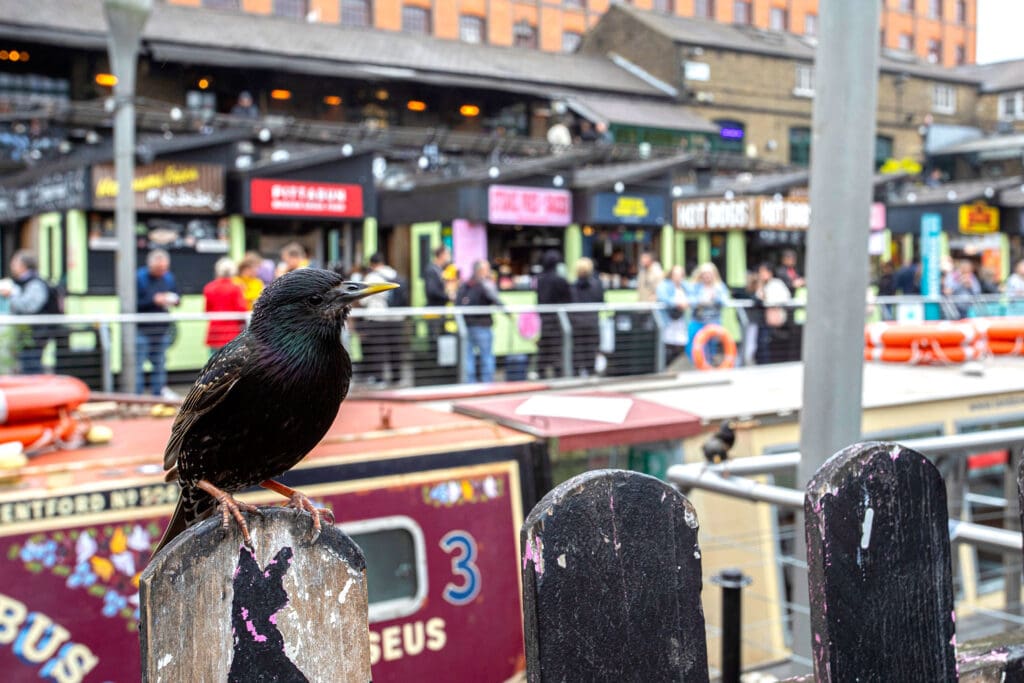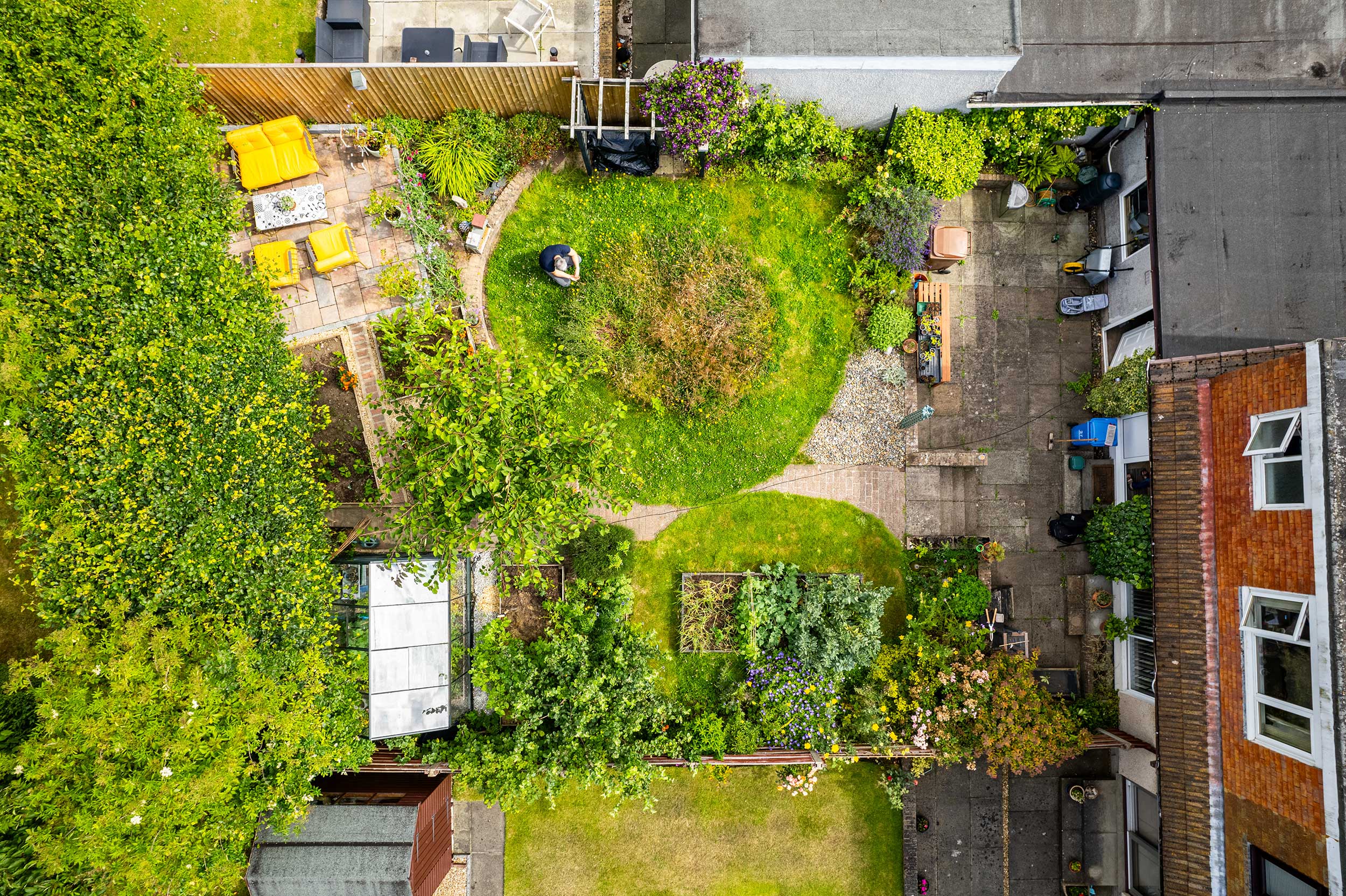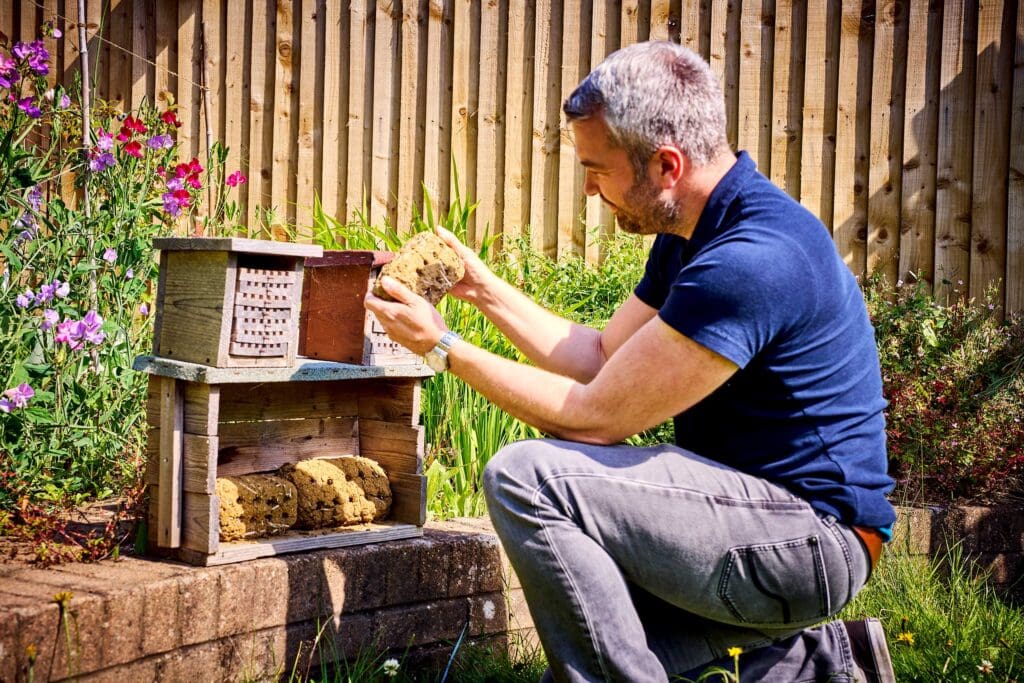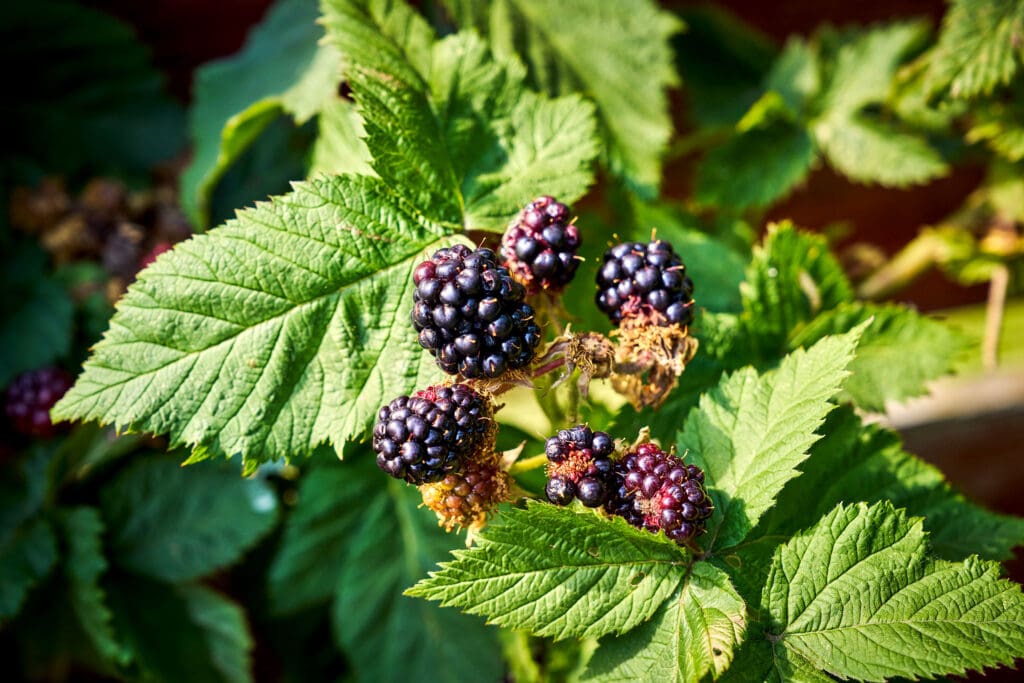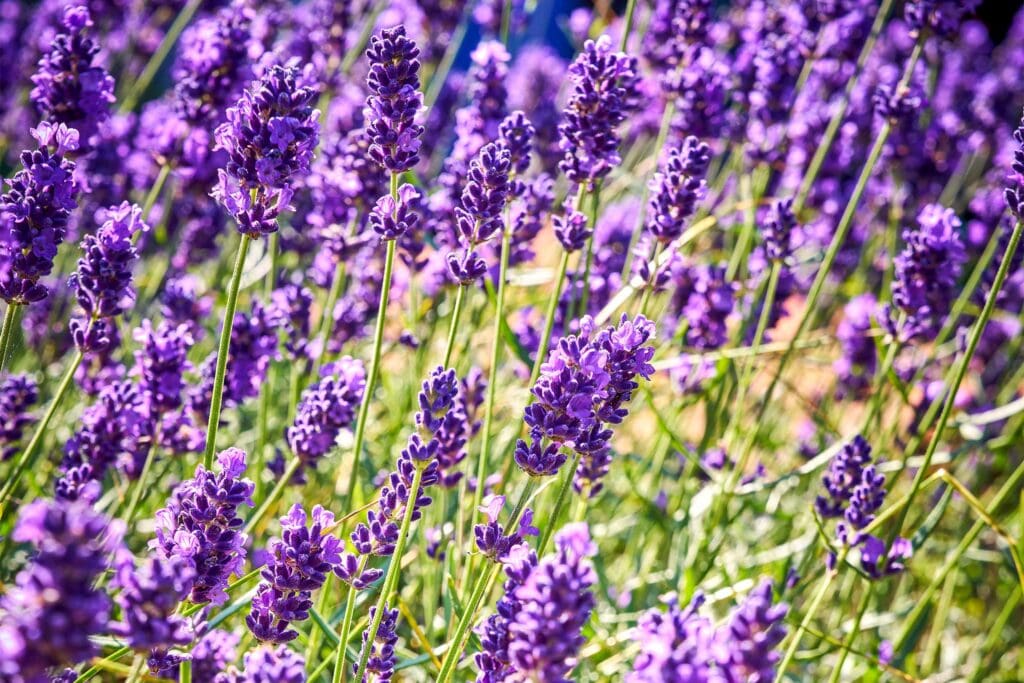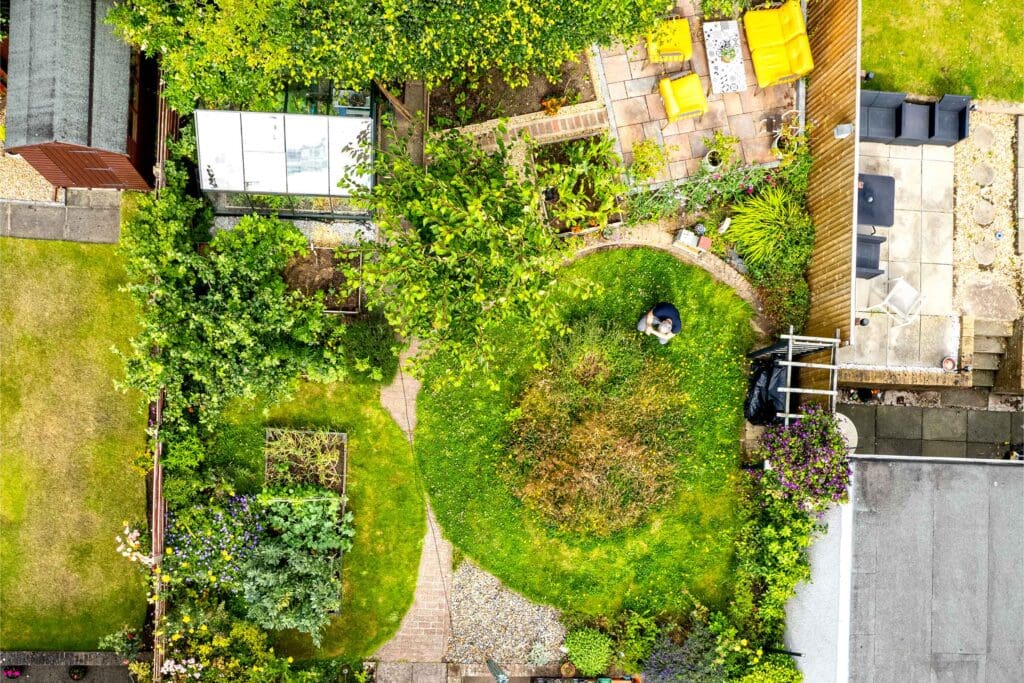“I just have three main principles,” James says of his small suburban garden just north of the Firth of Forth in Fife. “It has to be organic, it must work for me and it must work for wildlife.”
He and his partner moved there in 2015, when the garden was just grass and a few roses, and it had very limited wildlife value. But James knew he could do all manner of things to improve his garden.
He especially wanted to create food for insects, such as providing foodplants for the adults and their larvae. “In a small garden,” he says, “you want the flowers to work really hard and have a long season, so I grow species such as Achillea, Geranium Rozanne, Campanula and Viper’s Bugloss. Agastache ‘Blackadder’ is a favourite of Leafcutter Bees.”
In fact, James’ planting list is like a roll-call of the best plants for pollinators, including Sedum, Echinops and Nepeta (catmint) as well as an array of thymes that tumble over the path’s edge.
‘Having a wildlife-friendly garden creates a richer environment for my daughter to play in’
Interspersed with the flowers are fruit and vegetables. “We grow fruit such as blackberries,” he says, “which are great in so many ways for wildlife. Then there is an apple tree and broad beans for early pollinators, and redcurrants, which I don’t like but the birds love!”
James ensures that the front garden is just as good for wildlife as the back. It includes a semi-circular mini meadow surrounded by a mixture of lavenders.
And it’s the mini meadows – front and back – that James is perhaps most proud of. They’re rich with Cat’s-ear, Red Clover, Self-heal and Devil’s-bit Scabious and, of course, the meadow-making plant Yellow Rattle, which inhibits the vigour of the otherwise boisterous grasses.
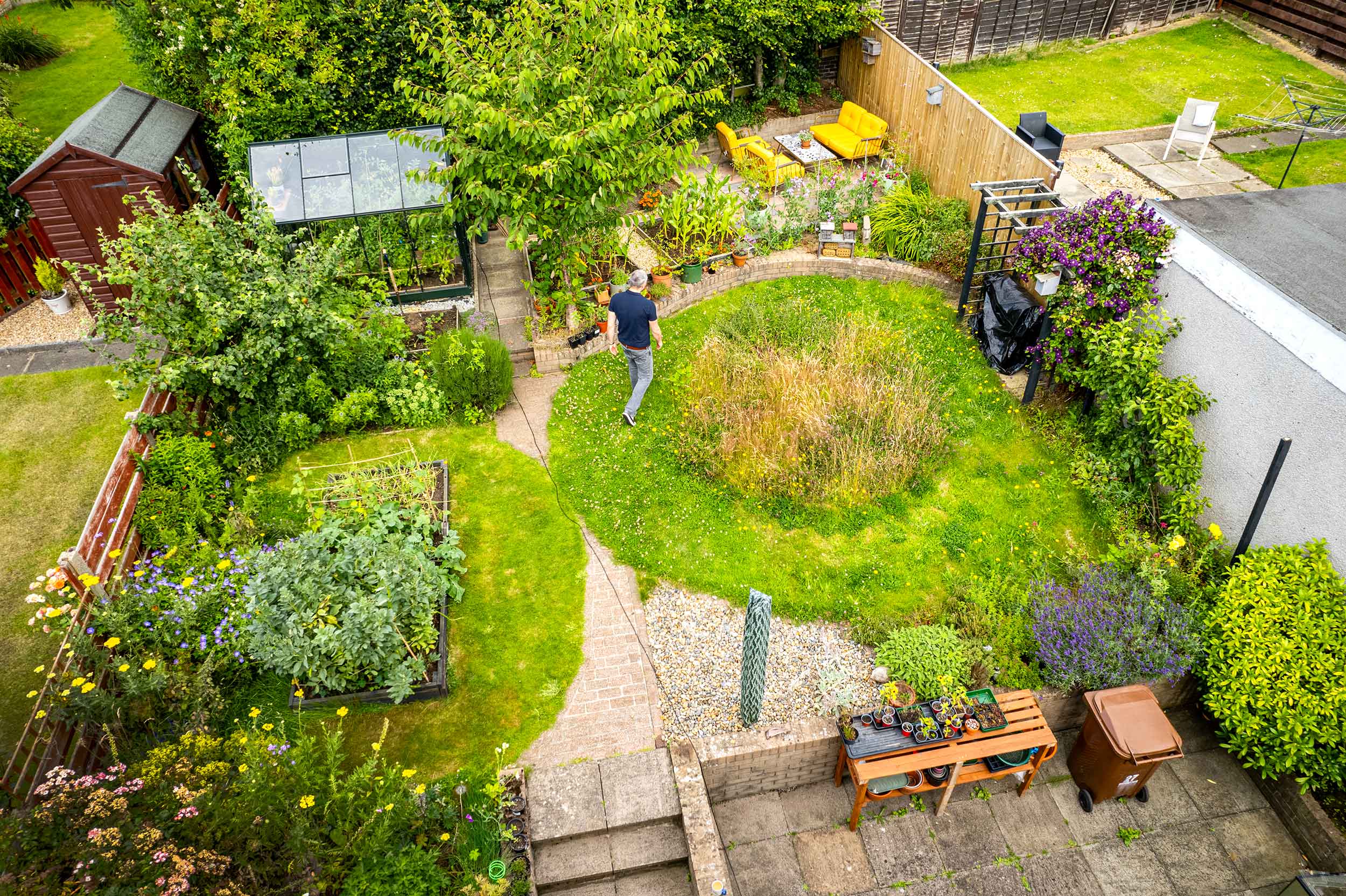
James’ advice is not to try to put everything in your garden, just supply what your neighbours don’t. Photo: Euan Myles
“I mow the lawn areas sporadically so the clover can flower, and leave the mini-meadows totally uncut until late summer,” James says. “I then mow it through the autumn.” He continues: “Hearing a grasshopper in the garden for the first time was incredible, as was a female Common Blue butterfly egg-laying. They were ‘if you build it, they will come’-type moments. The biggest highlight has been Ghost Moths fluttering over the grasses.”
Grow wildflowers in your garden in No Mow May.
There are still things James wants to do. “I don’t have much free time, but I try to improve the garden every year. Next I want to rejuvenate the overgrown pond.”
James also has to consider his toddler. “I grow nothing that is toxic or too thorny,” he says. “But apart from that, having a wildlife-friendly garden creates a richer environment for her to play in.”
I ask James what his biggest lesson from the garden is. “Overall, I think the important thing is just giving it a go,” he says. “You put in something that you know wildlife needs, and so often they move in.”
James’ top tips
- Always remember to provide for the whole life cycle of pollinators, not just flowers for the adults. For example, this might mean growing nasturtiums or a sacrificial cabbage for white butterflies, or creating a ‘hoverfly lagoon’, a mini pool for the larvae of some species.
- Enhance mini meadows by planting plug plants of choice meadow flowers. They often establish better that way.
- Don’t worry about trying to slot in every single feature for wildlife. Your garden is part of a patchwork of gardens, so aim to provide what your neighbours don’t.
How to…
Make a bee brick
Whip up your own at home!
James’ bee hotels are homemade, and they’re much simpler to make than you might think. You just need some clayey soil, a bit of builder’s sand and some straw. If your garden is on clay soil, you can simply use that, but otherwise you can buy a bag of cricket loam online. Straw or hay bales can also be bought quite cheaply.
Mix up the ingredients with a bit of water, form into a brick shape, poke some deep holes into the brick using old pencils and then leave to dry. The straw helps bind the brick together.
Once hardened, place in a sheltered, sunny, south-facing position near flower-rich parts of the garden. Solitary bees should move in within days in summer.
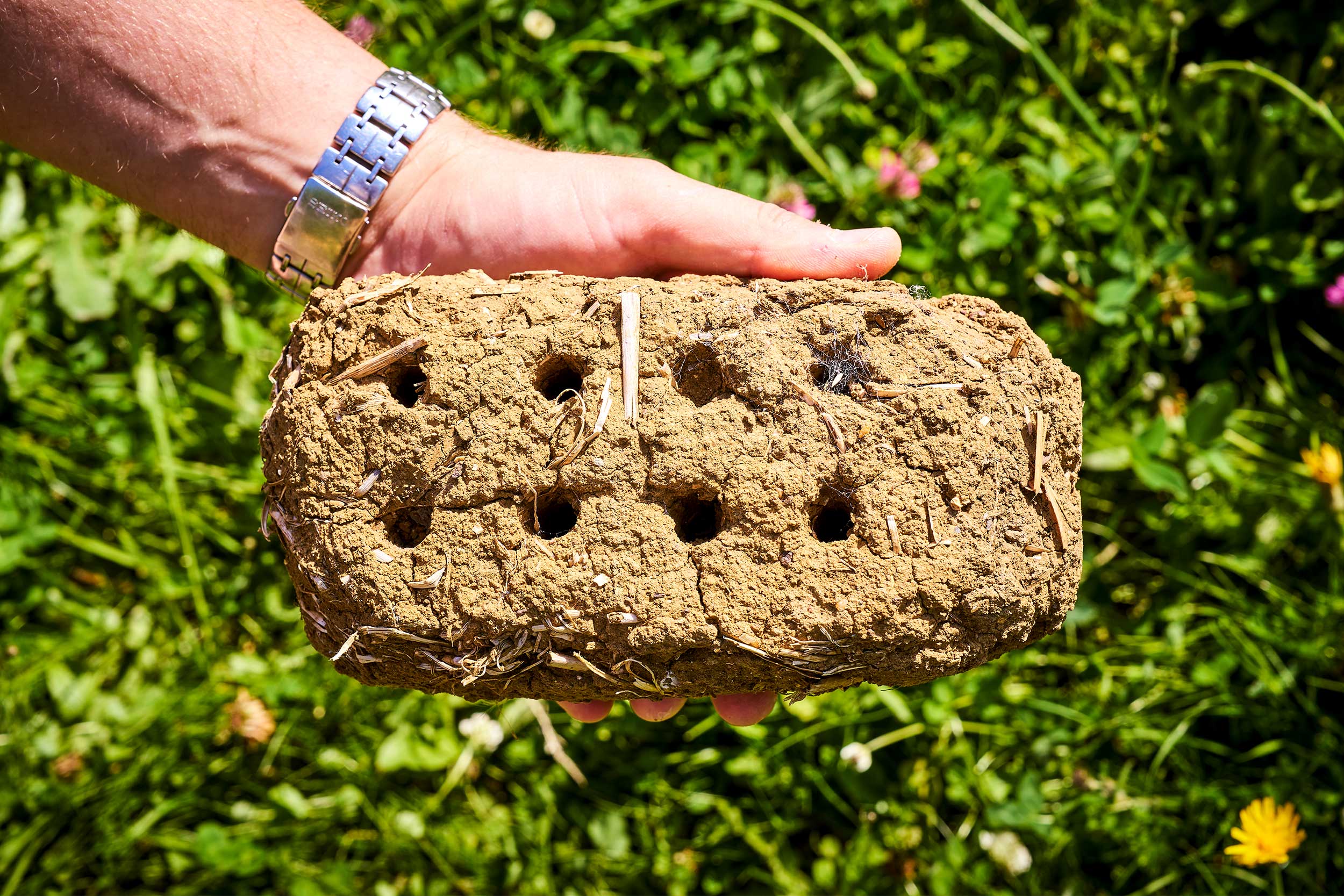
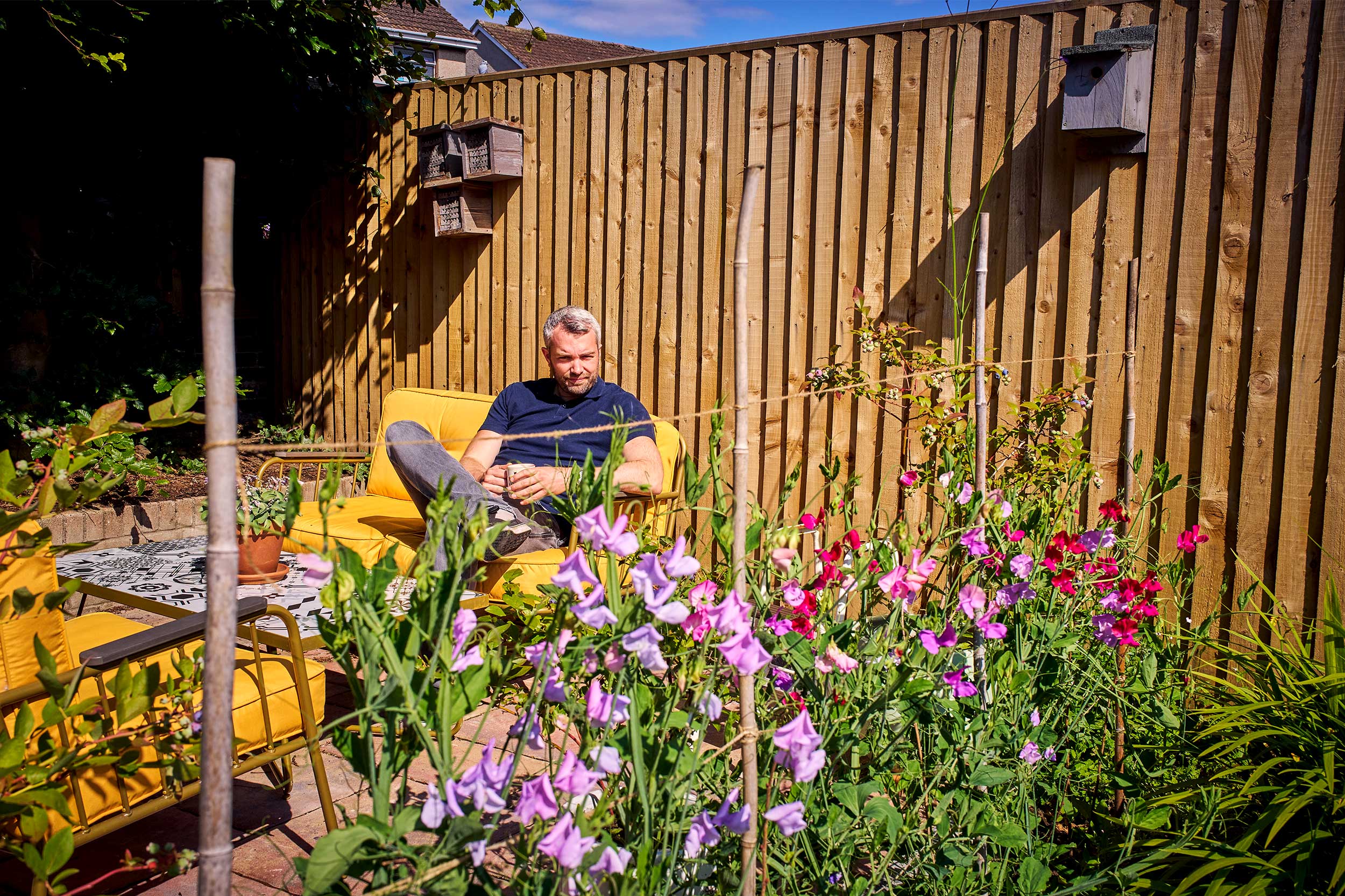
James seated in his garden. Photo: Euan Myles
Wildlife gardening ideas: a front-row seat!
- A key part of gardening with wildlife in mind is to remember to look after yourself! Make areas where you and your family can sit in the garden and be a part of nature.
- In James’ garden, his seating area is surrounded by wildlife-friendly plants, including this ‘wall’ of sweet peas, with bird boxes and bee hotels on the fence behind.
- The health and wellbeing benefits of being in nature are increasingly being recognised and understood by scientists and doctors. This is your unique opportunity to get the full value right outside your door, whenever you want!
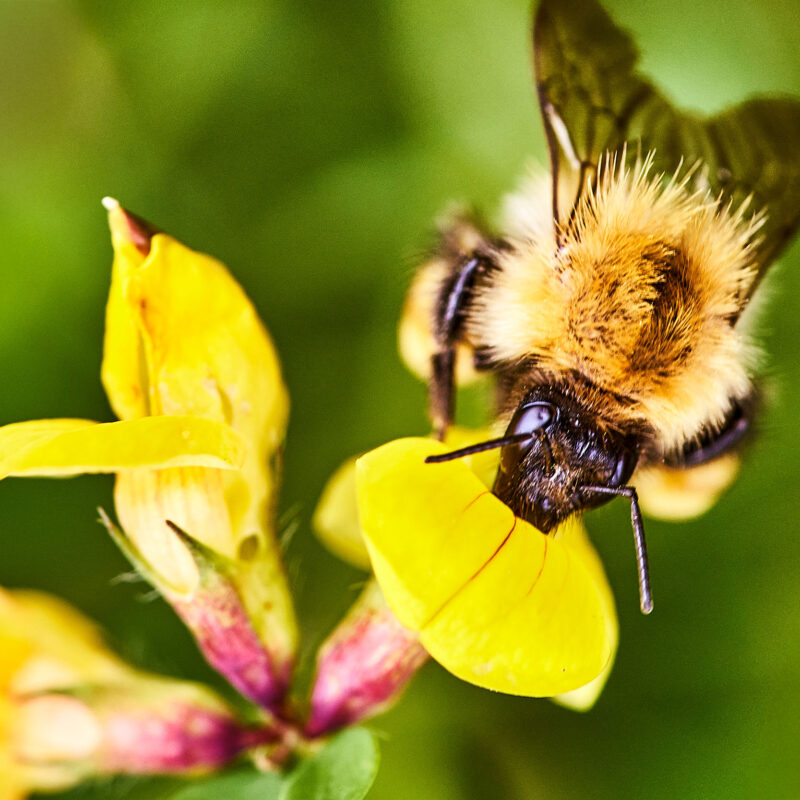
Common Carder Bee on Bird’s-foot-trefoil. Photo: Euan Myles
What to grow: Bird’s-foot-trefoils
- There are five species of Bird’s-foot-trefoils native to the UK, of which two – Common and Greater – are very widespread.
- The former usually grows on chalk, limestone and sandy soils and the latter in marshier places.
- These members of the clover family all have bright yellow pea flowers in whorls.
- Flowers of Common Bird’s-foot-trefoil can be orange in bud, giving them the name ‘Eggs and Bacon’.
- Common Bird’s-foot-trefoil is well adapted to growing in short grass and copes well with grazing (including by the mower).
- The flowers are well visited by longer-tongued pollinators such as the Common Carder Bee.
- However, their greatest value is their leaves, which are essential food for various insects, such as the caterpillars of the Common Blue butterfly and Six-spot Burnet moth.
- Bird’s-foot-trefoils are easy and cheap to grow from seed, or can be bought as plug plants to add to your own mini meadow.
- Common Bird’s-foot-trefoil will even work in a ‘pop-up meadow’, where you just stop mowing your lawn for a few weeks in the summer. It will burst into a carpet of gold!
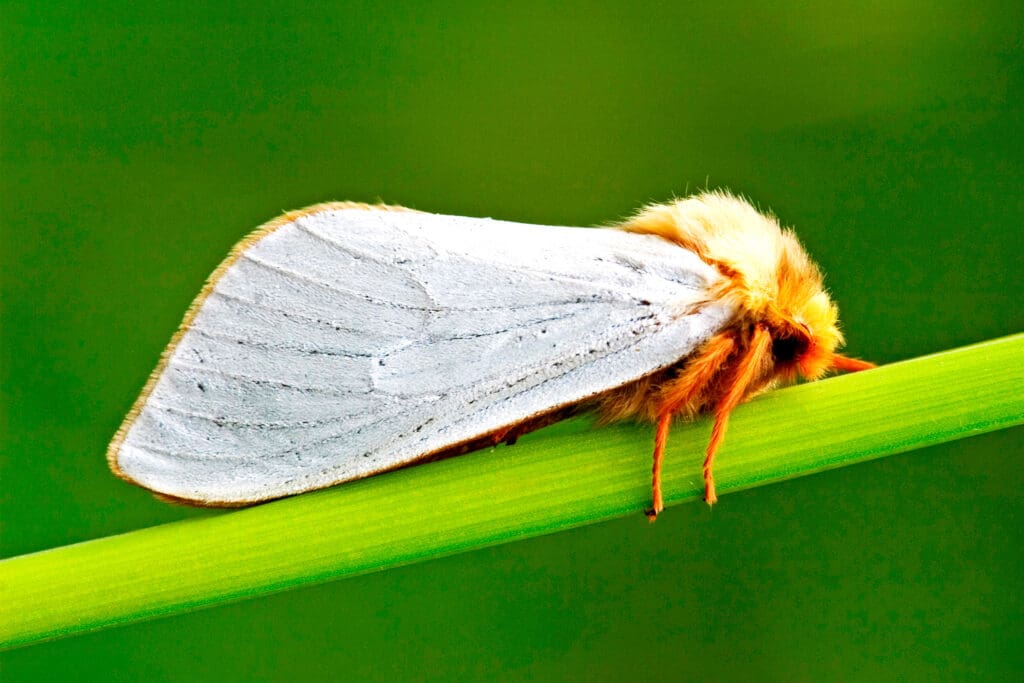
Male Ghost Moths have golden fur and wings like shiny paper. Photo: blickwinkel (Alamy Stock Photo)
Spotlight on Ghost Moths
James has seen Ghost Moths lekking over his mini meadow. (A lek is where the males gather in June and July, pumping out pheromones and fluttering back and forth just above the tops of the grasses.) Their name comes from the male’s white wings, which look like shiny paper.
Their bodies are covered in dense golden fur. They have no mouthparts, so don’t visit flowers for nectar.
Once mated, the females will scatter eggs into the meadow, and the caterpillars will feed on the grass and flower roots for up to two years before pupating and then turning into adults.
This is another garden species for whom a shift in lawn management from ‘always mown’ to ‘mini meadow’ will help create the right conditions.
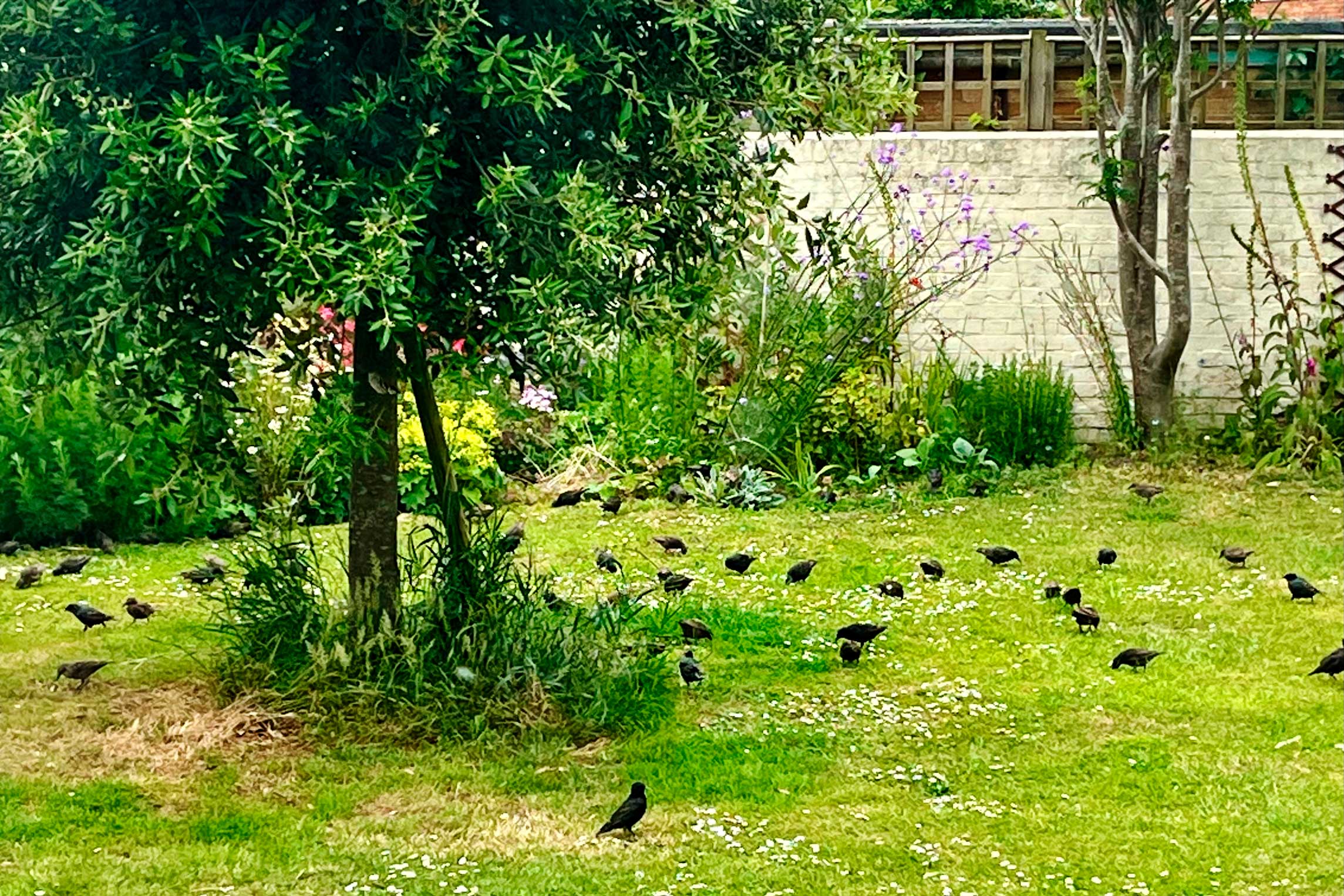
Starlings in Sarah’s garden. Photo: Sarah Hunt
Your letters: Seaside special
When I first got Adrian’s RSPB Gardening for Wildlife book, I didn’t have a garden and was living in Gibraltar.
Fast-forward five years and I finally had my own small garden. It contained a few non-native pruned bushes and a closely cropped lawn. The Big Garden Birdwatch yielded one Woodpigeon.
I set to work with Adrian’s book as my bible. The soil was thin and rocky, and everything was battered by the salty winds off the seafront.
I persevered and learned as I went. I’ve planted gorse, built a compost bin out of pallets that is now home to Wood Mice, toads and a Wren, created sheltered spots and planted lavenders, Hawthorn, Birch, Ivy, Honeysuckle and more.
I put in a tiny pond and have already had a large frog visit, plus dragonflies and in the summer the bats circle above, hunting insects.
The second Big Garden Birdwatch was a bonanza of birds, with a count of 45 Starlings among many other species. And I’ve been lucky enough to enjoy the company of less common birds such as Goldfinches, Chiffchaffs, Willow Warblers, a Sparrowhawk and even a Great Spotted Woodpecker.
‘My’ House Sparrows have doubled in number since I started feeding them every day, and they now nest in the eaves of my house.
When you read comments that small patches can make a huge difference for nature, they really can. My small garden and my learned knowledge is, quite literally, living proof.
Sarah Hunt, Sussex

Sarah’s hedgehog houses. Photo: Sarah Wild
Your letters: Hedgehogs!
Here is a photograph of the Hedgehog houses and feeding stations that I have set up in our garden. It initially began with one small feeding station and one house. This then progressed onto two of each. We now have up to two Hedgehogs visiting.
To make more people in our area aware that we have Hedgehogs, I stuck lots of ‘Slow – Hedgehog’ signs on lamp posts and street furniture and signed up to the British Hedgehog Preservation Society. I’m posting their leaflets to neighbours.
Sarah Wild
If you have a space you have transformed with wildlife in mind, please tell us about it at rspbmagazine@rspb.org.uk
You might also like
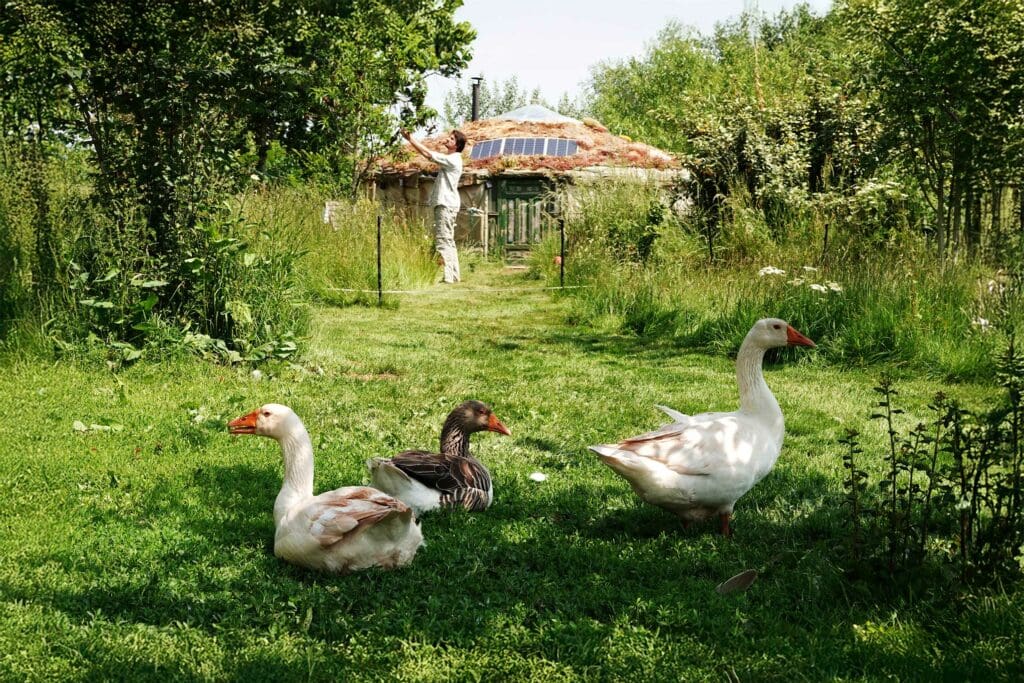
Enter a sustainable Somerset forest garden

What is No Mow May?
